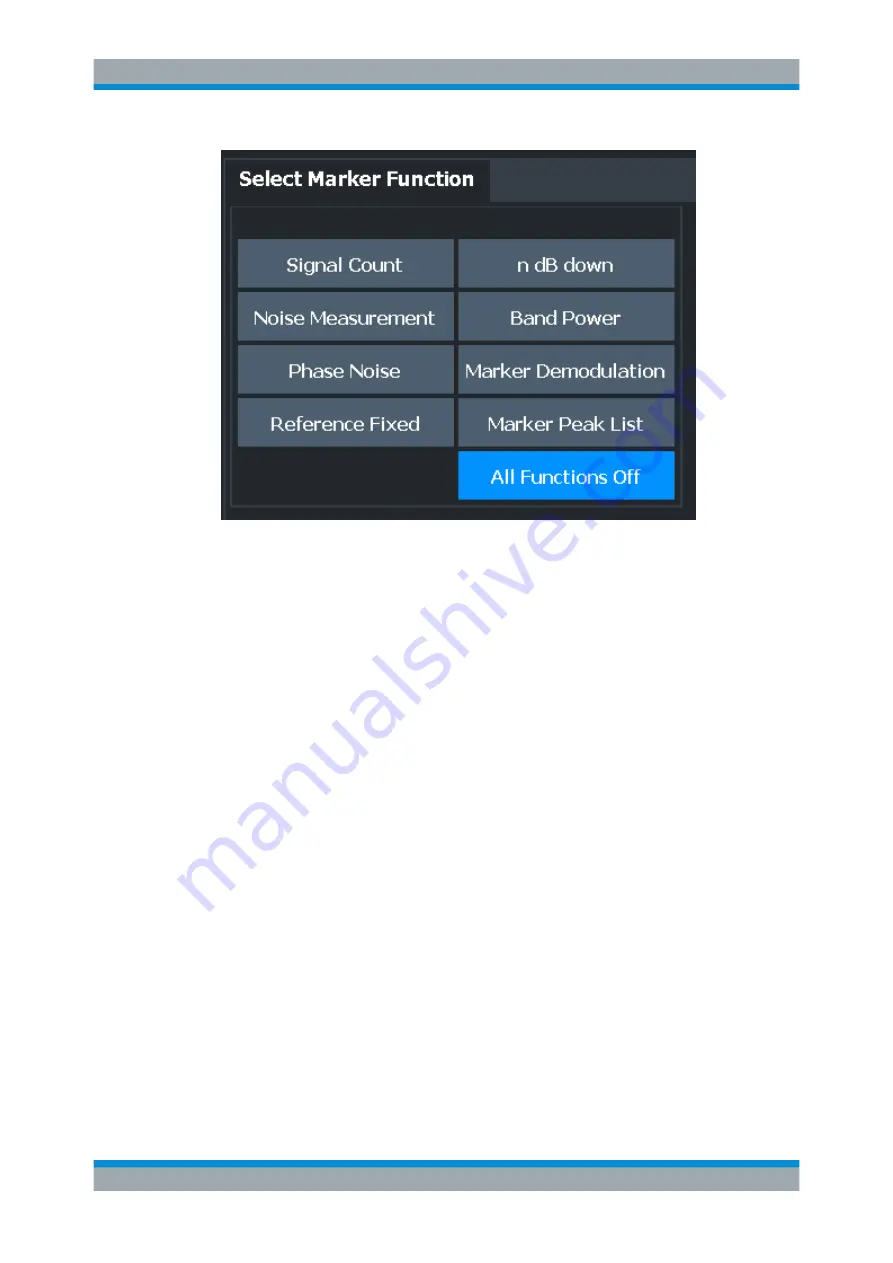
Common Analysis and Display Functions
R&S
®
FSVA3000/ R&S
®
FSV3000
443
User Manual 1178.8520.02 ─ 01
The remote commands required to define these settings are described in
ter 14.8.3, "Working with Markers"
Precise Frequency (Signal Count) Marker
............................................................443
Measuring Noise Density (Noise Meas Marker)
....................................................445
Phase Noise Measurement Marker
.......................................................................448
Measuring Characteristic Bandwidths (n dB Down Marker)
..................................450
........................................................................................452
Measuring the Power in a Channel (Band Power Marker)
....................................453
Demodulating Marker Values and Providing Audio Output (Marker Demodulation)
Deactivating All Marker Functions
.........................................................................463
9.3.4.1
Precise Frequency (Signal Count) Marker
Access
: "Overview" > "Analysis" > "Marker Functions" > "Select Marker Function" >
"Signal Count" > "Signal Count Config"
Or
: [MKR FUNC] > "Select Marker Function" > "Signal Count" > "Signal Count Config"
A normal marker determines the position of the point on the trace and indicates the sig-
nal frequency at this position. The trace, however, contains only a limited number of
points. Depending on the selected span, each trace point can contain many measure-
ment values. Thus, the frequency resolution of each trace point is limited.
(See also
Chapter 8.5.1.8, "How Much Data is Measured: Sweep Points and Sweep
Frequency resolution is further restricted by the RBW and sweep time settings.
Marker Usage
















































